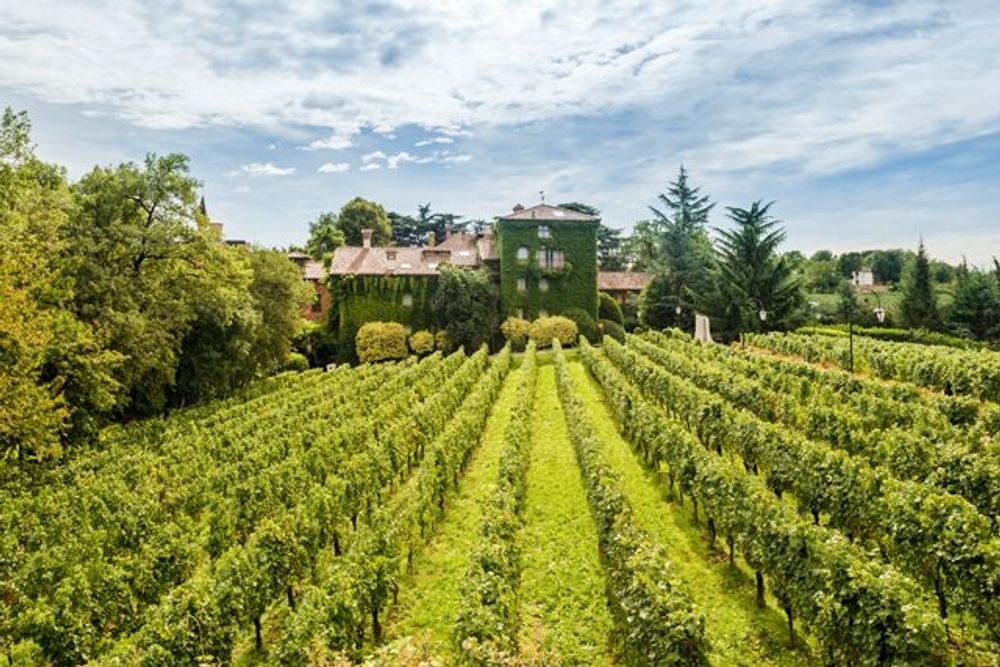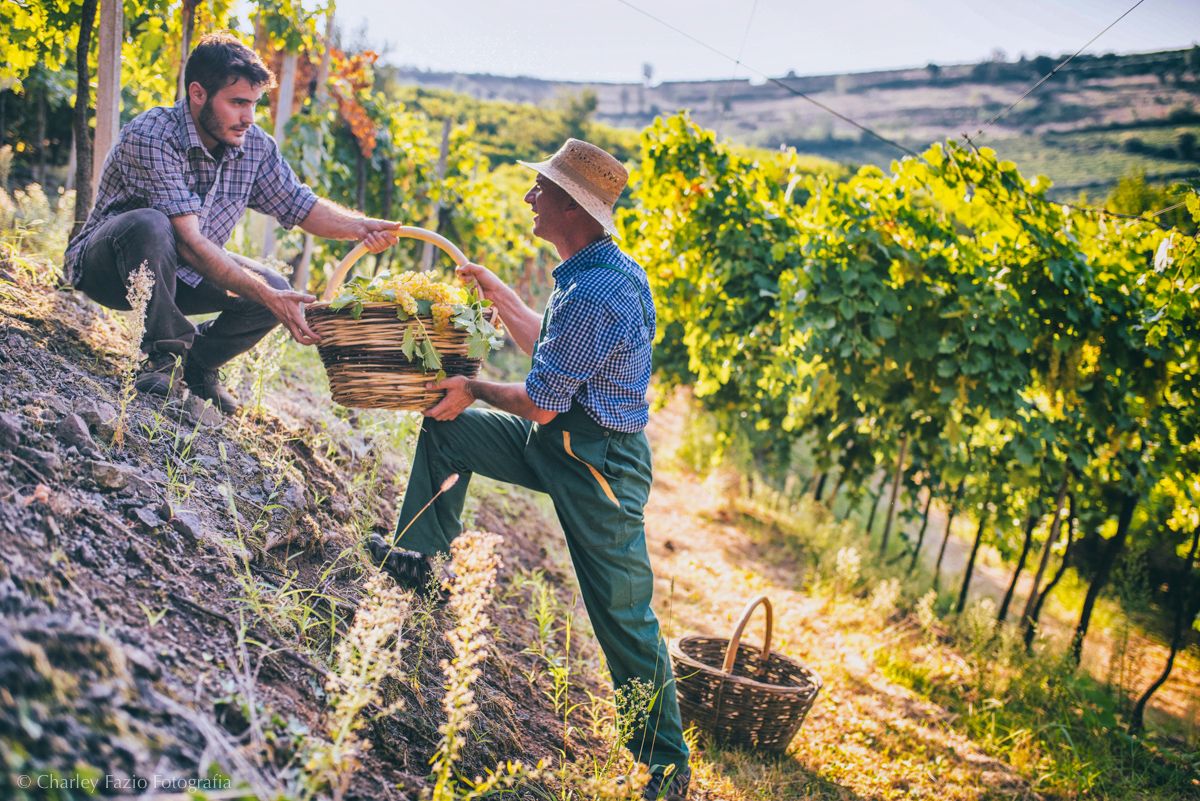The Bellavita trade expo brought the best of Italian food and wine to London last month. It was also an opportunity for leading buyers to assess how well Italian wines are doing in the UK and look ahead to what we can expect in the future.
You are left scratching your head sometimes why there are those in the trade who look at Prosecco as some sort of problem? For those charged with sourcing and selling Italian wine in the premium on-trade it is not only dominating sales but driving growth across the category.
At least those were the overriding views of The Buyer’s panel of leading buyers and merchants who took part in a debate covering Italian wine at last month’s Bellavita Expo for Italian food and wine.
For try as one might to take the discussion away from Prosecco, all avenues of conversation come back to what is such a key part not only of a distributor, merchant or restaurant’s Italian sales, but in helping sales right across the wine list.
John Graves, on-trade development director at Bibendum says Prosecco makes up half of the 600,000 nine litre cases of Italian wine it sells as a group to its 5,000 plus on-trade customers a year. The rate of growth continues to astound him.
“I joined Bibendum 12 years ago and we did not have a Prosecco producer. It is now is our biggest selling single wine and we have over 50 different Prosecco SKUs. So you can see how quickly it has grown in the market.”

One of the most beautiful and diverse wine producing regions in the world is the home for Prosecco
Hopes on premium Prosecco
It is, though, premium Prosecco where he now sees the future. “Our goal is to sell decent quality Prosecco and if we can achieve that then that we have made some real progress. The opportunity is to work with people who sell good quality wine and you can sell Prosecco alongside those wines as a wine, as opposed to a commodity.”
He concedes, however, that only about 15% of its Prosecco sales are currently at a premium level.
“I am not embarrassed to say it has become a commodity in some areas. The vast majority of Prosecco that is sold in the UK on-trade is entry point that’s made to a price point. So we have to be careful. The first thing a lot of our restaurant customers will say to us is ‘how much is your Prosecco?’ Which is a ridiculous situation to have got out ourselves into.
“I can remember what happened to Cava in the late 1990s. It just chased volumes and chased and chased. It was cheap everywhere and it almost disappeared. It almost destroyed itself. So the key thing for the Prosecco market is protecting the quality and not chasing volume.”
“Everyone involved in the wine trade has got a duty to protect Prosecco as it’s a brilliant product. Which involves trying to educate the consumer about the different premium Proseccos there are.”
Joy Edmondson, buying and marking director at North South Wines, agrees that premium styles of Prosecco are where future sales lie and that as a business it has “always focused on premium Prosecco and believe that is the future and what we are building on”.
She adds: “The category is starting to focus on the top end and there is definitely a market for the top end out there. There are consumers now who are regular sparkling wine drinkers, they drink it on every occasion, it’s an everyday drink and they are willing to experiment and trade up into more expensive Prosecco.
“Our business is 25% on-trade and 75% off-trade and over half our business is Italian wine. We have some very important partners like Villa Sandi from Prosecco.”
Right Prosecco, right market

Chris Carson at Carson & Carnevale Wines works with five Prosecco producers covering different aspects including biodynamic, organic, estate production, commercial volume Prosecco and smaller, family businesses. He believes more work needs to be done by importers and distributors identifying the right Prosecco for different channels of the market.
“We need to be doing more to identify which Prossecos should be going into which outlet. What is best suited for a particular restaurant, bar or hotel.In terms of education that might be an interesting challenge as the British consumer has understood the brand as ‘Prosecco’ and does not understand there is a DOC and DOCG. So where this gets divided comes back to the trade and where they are selling their DOC and DOCG Proseccos.
James Snoxell, head wine buyer at Armit Wines, says Prosecco is also “one of our biggest selling lines”. But he thinks there will be “an evolution in what people want from Prosecco”.
“They will start to want drier styles, thinking about their health they will want skinny Proseccos and they will want single vineyard Proseccos. Restaurants will also want to offer something different to their customers, so there is still a huge amount of potential and real future for Prosescco. It’s certainly still trendy and has made it a lot harder to sell cheaper Champagnes. There’s still at least another five years success story for Prosecco.”
Opening door for other Italian fizz

Italian sparkling wine regions like Franciacorta are benefiting off the back of Prosecco
The boom in Prosecco is also opening the door for other, less well known, Italian sparkling wines to have their day, like Pignoletto, says Graves.
“I have starting to show some of my customers more non-Prosecco Italian sparking wines and they are stating to sell them as ‘Italian fizz’ which is interesting,” says Graves.
Edmondson says she has also seen good success for Spumante which North South has brought in from Sicily. “That’s definitely on the back of consumers wanting to drink sparkling and experiment with new things and if you can find something that is a similar taste profile – aromatic, lighter and easy to drink – then they are prepared to try them at the right price. So I think they will find more space to Italian sparkling.”
Carson says there is huge potential for Italian sparkling wine. “I am also amazed at the number of Italian producers that seem to have a sparkling wine. There are a lot of sparkling wines to choose from and very good sparkling out there. Franciacorta is a very classy Italian wine. Pignoletto is an ideal product for this market. Not only in Frizzante form, but in Spumante. We have launched blanc de blanc from Emiglia Romana and a very interesting rosé that is a very elegant and appealing rosé.”
Growth in all areas

Areas such as Soave have really benefited from falling volumes and demand for classic Bordeaux regions, says Graves
Outside of Prosecco Graves says there is strong demand in most areas. “It’s a really good and encouraging spread of wines from all over Italy.As Chablis, Sancere, Burgundy and Bordeaux have all struggled in last few years with low production and high costs that has meant the great Italian areas have really taken off in the on-trade. So people producing really good quality Gavi or Soave, Campani, Lombardi are all starting selling their good mid range wines into the on-trade that used to be dominated by Sancerre and Chablis which is great news.
He adds: “Italy is also offering amazing value at entry point for our customers. They need wine they can sell at wine by glass or spend fortunes and Italy just offers incredible value for money. Barbera, for example, is one of our biggest selling varietals now which say five years ago would not have sold hardly anything.”
Carson at Carnevale Wines believes more needs to be done from Italy, and its various regions, in helping the trade and consumers understand the different styles. “Education is extremely important for Italy as it has such a wonderful selection of wines,” says Carson.
Producer fears
Whilst our doors might be open to Italian producers there is some unease in Italy itself about the opportunities they see in the UK, warns Snoxell.
“Producers are a little more worried about the UK market, particularly with Brexit and seeing the pound drop,” he explains. “I have noticed our producers really wanting to know who the end consumer is. Very much more demanding in wanting to know who is drinking their wines, where their wines are being listed. What Italian premium producers want is visibility in the very best locations, but it is not always to deliver, especially when the wines are expensive.”
The panel agreed that the UK is being seen more as a shop window, and it is having to fight harder for its position as a key fine wine market.
Its why Carson believes it is even more important for distributors to work with the right minded producer, and not just be swayed by the quality of their wines. “In this current trading environment it is critical to have producers that want to have a two way conversation with us, they want to understand this market and actually try and adapt to it, which is desperately difficult as every Monday morning the goal posts are being moved.
“We have about 30 different Italian producers and circumstance have to have competitively priced wines and over deliver on quality to price even at the lower end. Yes, it’s the diversity, but it is also the benefit for us working with the euro, versus the Aussie or American dollar. That’s a big advantage. You are not having to worry about too much movement on exchange rate. That is a critical part of wine selection.”
He adds: “The UK market is a painful market for most producers around the world. Everything is really quite price obsessed and as an industry we have to be mindful of this and these producers have to be selling some profitable products or they will move away from the UK. After all where there are profitable markets, Italy will do well. They’re selling profitable wines in key markets like Germany, the US and China. So we have to recognise this. That said I can’t see Italian producers walking away from the UK. They like the sales and they like the more premium sales.”
Edmondson says she has seen little push back from the producers she works with. Particularly those making wines in the sweet price points of between £7 to £15. “Our producers are fully committed to the UK and that is where we are seeing the growth,” she says.
Graves argues the higher you “go up the premium ladder, the UK becomes more important”. Particularly as there is now so much demand and opportunity outside London.

Cities around the country, including Edinburgh, are now enjoying enormous growth in restaurants and bars
“You have now got Manchester, Leeds, Birmingham, Edinburgh and other key cities becoming much more international in terms of their visitors, tourism. London, for example, is now an international metropole. So if you want to give your winery a really good shop window, you want to get your wines into the best restaurants in these cities so that other people around the world can see them. If you can get your wine in the Savoy Grill you are going to have people around the world seeing your wines and that is still massively important for producers.”
Pricing issues
He says the issue around pricing should really be only focused at the premium level.
“You have got to look at price points where people care about what they buying. If they are buying at house level they they don’t care where it comes from. But if they want a Gavi then they do. I would be looking at number four or five on a list and wines that are available by the glass but are not entry point. That’s where you can make some money. If you go to gastro pub you are looking at wines between £25 to £35 and if you go to a decent restaurant then it’s £35 to £45 and then a fine dining restaurant it is anything up from £50. Within those price points Italy has got everything to offer.
Snoxell says the choice is certainly there for buyers. “Italy offers the finest wine that is available. Some of our north east suppliers are excellent value for money compared to Grand Cru Bordeaux and Burgundy.”
Luigi Buonanno, regional sales manager for London for Berkmann Wine Cellars, agrees: “Italy has all the price points covered but what is driving the volume is between £7 to £15. Regional £35 to £45 is where most of the Italian wines are being sold.”
Carson says it has also heavily focused on the £7 to £15 range. “But we also getting goodsales at cru level from Sicily at nearer £20 to £25 a bottle and they are selling through. The price has got to be justified by the quality.”
- You can read the first part of our panel debate here.










































